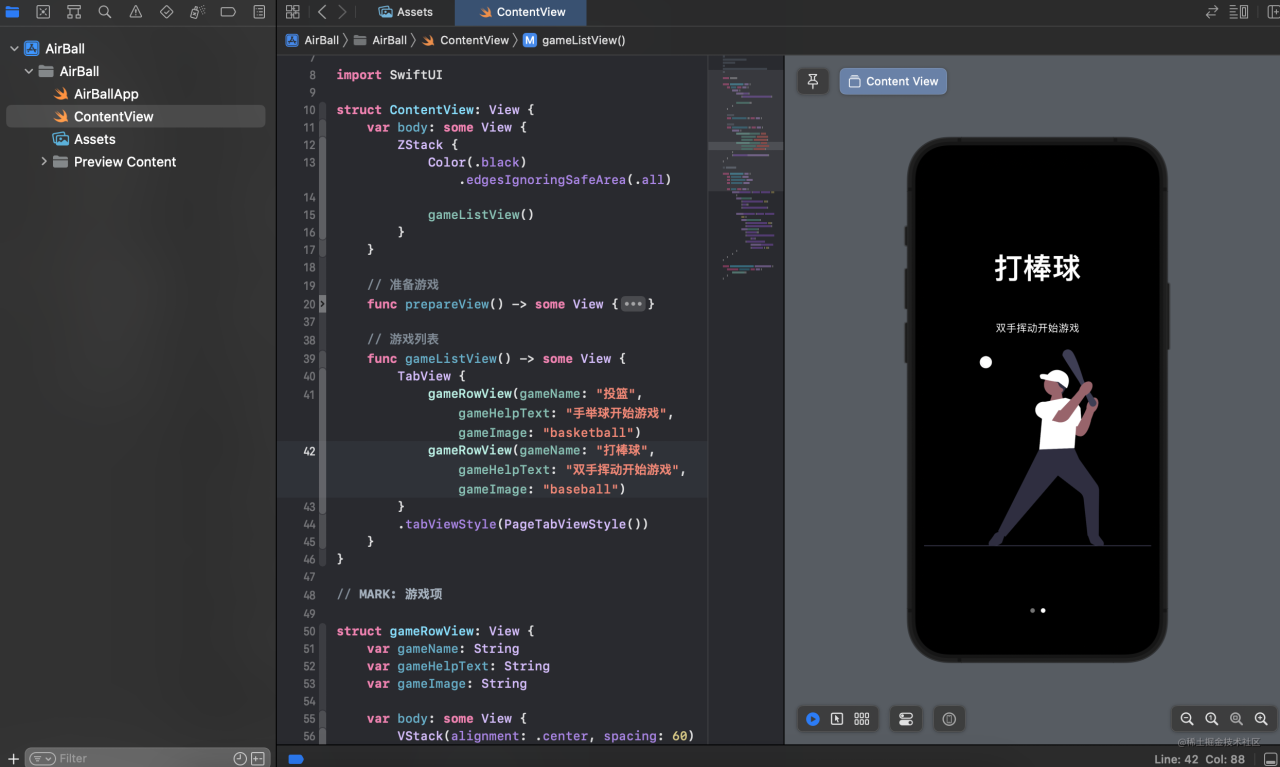

- #Pagetabviewstyle swiftui how to
- #Pagetabviewstyle swiftui code
You probably guessed it: the environment.I took inspiration from Asperi' answer, however I had to modify some things to make it work in my case. We already have some cascading features available in the framework.

One of the challenges is how we can set the styling high in our view hierarchy, and affect all the toggles below. But I’ll provide some pointers to get you started: Cascading Styles You probably already see the challenges ahead.

You will probably learn a lot in the process, even if you don’t succeed (especially if you don’t succeed). But I encourage you to try to implement it yourself, without looking at the code.
#Pagetabviewstyle swiftui code
I am making the complete code available on the gist file referenced below.
The KnobTripleToggleStyle is in itself customizable (i.e., the dot color). We created an extension on View (.tripleToggleStyle()), for easy setup. Setting the style on a specific subtree overrides the style set higher in the hierarchy. We can set the styling in a view higher in the hierarchy, and it will affect its descendants. We have separated the styling, from the logic. The code above shows you some interesting accomplishments: tripleToggleStyle(KnobTripleToggleStyle(dotColor. TripleToggle(label: Text("Knob #3"), tripleState: $st) tripleToggleStyle(DefaultTripleToggleStyle()) TripleToggle(label: Text("Default"), tripleState: $st) TripleToggle(label: Text("Knob #2"), tripleState: $st) TripleToggle(label: Text("Knob #1"), tripleState: $st) As you can see, I have created two different styles: one that I call DefaultTripleToggleStyle and the other, named KnobTripleToggleStyle:īy implementing styling, we get to use our custom view, with this simple code: struct ContentView: View private var st: TripleState =. Now that we know how we can style some of the native views from SwiftUI, let’s explore how we can follow the same styling pattern, on our own custom views.įor this example, we are going to create a three-state toggle switch. In ButtonStyle, for example: public struct ButtonStyleConfiguration ) These properties are commonly referred to as the configuration of the style. The method receives some properties required to implement the logic of the control. For example: func makeBody(configuration: Self.Configuration) -> some View They have a method that creates the view. How Does a Style Work?īuttonStyle, ToggleStyle and all the other styles, are simply protocols. Creating a tab bar requires no effort as you can see in the next snippet: Contained views that we implement inside the closure can be any SwiftUI views. It’s a, since it contains all views presented behind each tab item. Whatever we do, the logic is still the same. The is the responsible one for adding and manipulating a tab bar in SwiftUI based projects. However, we could change that and replace the dim, with a scale down effect. Its style, on the other hand, can vary: a typical example is a text view that shows the label contents and dims while pressed. When the interaction is complete, a callback function is executed. For example, the logic of a button can be described as an interactive view (usually through a tap or a click). 
Styles let us alter the appearance of the view, but keep their logic intact. Views and especially controls, usually have a look and a logic. If you need to know how big it is, then perhaps TabPageViewStyle is not what you want. All the cunning has gone into making the index view unobtrusive. Hopefully, I got your attention, so let’s get on with it. Maybe TabPageViewStyle was intended to be for pages where there is no visible index, or overlaying a small index does no harm.
#Pagetabviewstyle swiftui how to
Finally, and probably the most fun, we’ll learn how to implement the same styling pattern with our own custom controls… not just toggles and buttons. I’ll present the basic setup of a button and a toggle style, but then, we’ll see some aspects that are usually forgotten: how to play nice when inside a Form, and the importance of the accessibility activation point. You probably already experimented with it, and think it is just a trivial exercise… but don’t fly away so soon. In this article, we are going to discuss a simple but useful SwiftUI feature.








 0 kommentar(er)
0 kommentar(er)
